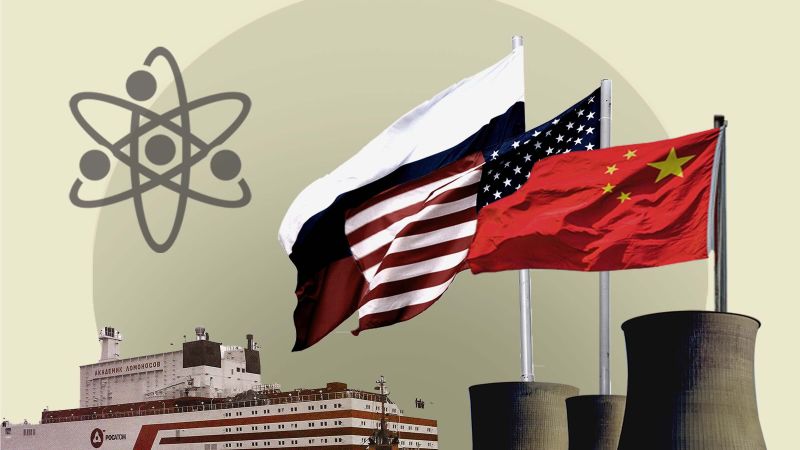Off the Siberian coast, not far from Alaska, a Russian ship has been docked at port for four years. The Akademik Lomonosov, the world’s first floating nuclear power plant, sends energy to around 200,000 people on land using next-wave nuclear technology: small modular reactors.
This technology is also being used below sea level. Dozens of US submarines lurking in the depths of the world’s oceans are propelled by SMRs, as the compact reactors are known.
SMRs — which are smaller and less costly to build than traditional, large-scale reactors — are fast becoming the next great hope for a nuclear renaissance as the world scrambles to cut fossil fuels. And the US, Russia and China are battling for dominance to build and sell them.



The Akademik Lomonosov was supposed to cost the equivalent of $232M, but ended up somewhere north of $700M all for a net electrical output of 64MWe. In that respect, it follows a familiar path for nuclear projects.
On a cost/kW basis, it’s about three times the cost of wind installations. ($3625/kW vs $1300/kW)
The last co-gen plant I worked on had an output of 353MWe and cost about $450M, which was about $50M under budget.
This misses one of the key points about smr’s. They’re supposed to be made in a factory. That ship is one unit and expensive as hell. If you make 100 or more of the same smr, you can amortize the tooling cost over many units. This also allows for configurable size stations. Right now, nuclear stations are one and done, custom jobs.
People keep saying this, but it’s not accurate.
An EPR is an EPR, the same with the AP1000. There are only very minor differences between installs, usually things that will help ease of construction or reliability on future builds. Both are GEN III+ designs, greatly simplified compared to previous generations, with fewer pump, valves and pipe-runs. They also shortened pipe runs where possible. They also have large, factory-built assemblies that are shipped to site, ready to “bolt” in, which should have reduced site construction time.
Where major changes do happen, it’s with the balance of plant infrastructure, which is site dependent. Location of access roads, where the switchyard is installed, where cooling water is accessed , etc will never be the same between sites. Nor will the geotech information. So a lot of mainly civil and structural design and fabrication will always be site specific.
The KLT-40S reactor is a variant of the KLT-40 reactors developed for and installed in the Taymyr icebreakers back in the late 1980s. It should have been cheap, as it’s a known quantity with a long track record.